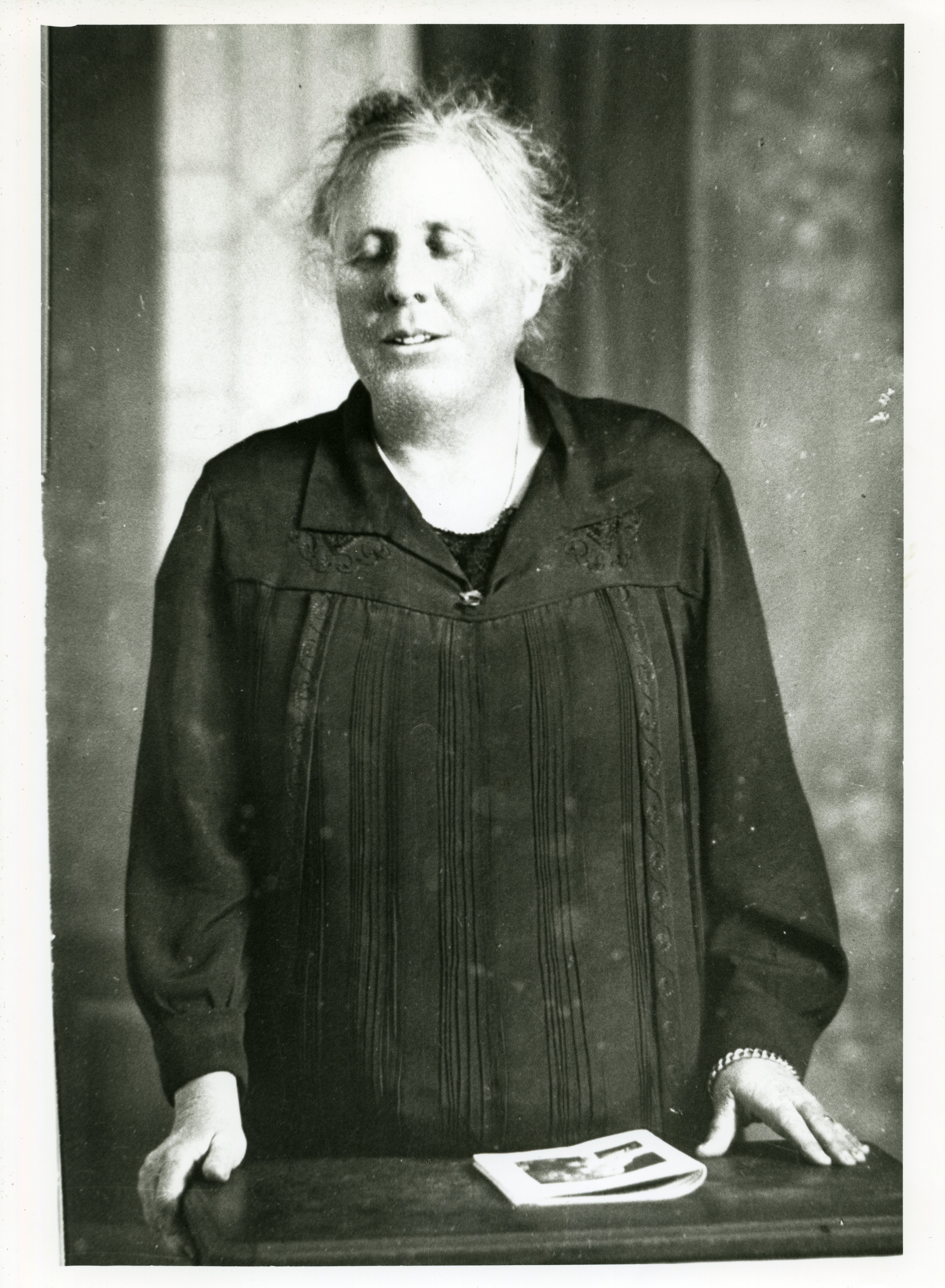Disability services pioneer Susan Schardt to be honoured with Blue Plaque

In a tribute to a trailblazing pioneer, a Blue Plaque honouring the late Susan Schardt’s ground-breaking contributions to the field of disability services will be installed in Ryde.
This plaque is one of 14 which have been chosen in the second round of the Blue Plaques NSW program.
At a time when support services for people with disabilities were virtually unknown, Susan Katherina Schardt (1872-1934) founded the Commonwealth Home for Destitute Invalids in 1899, which evolved into the Royal Rehab – Australia's longest-continuously operating disability service provider.
Schardt was born blind in Queanbeyan and became a philanthropist whose influential work changed social attitudes towards disability.
While visiting patients at Royal Prince Alfred Hospital, she became aware some people were unable to be cared for after their release. Her first rehabilitation case was rehoming a man who had become paralysed and destitute; he was being discharged but had nowhere to go.
Schardt began fundraising and formed a committee. Half a dozen years later the committee bought a permanent rehabilitation home after Sir Henry Moses sold his property to the cause for half its estimated value. His mansion, Weemala, sat on 17 hectares at Ryde.
Blue Plaques NSW celebrates well-known characters many of us are familiar with, but also brings attention to lesser-known stories of people and events that shaped a particular community, town, or field of work or study.
The Royal Rehab in Ryde nominated Schardt for a plaque as her work led to the establishment of this important facility, and she is recognised throughout the centre. Her nomination for a Blue Plaque was among 117 made by the public then assessed by independent historians.
Heritage NSW is working to finalise the plaque’s location and once installed it will be listed on the Blue Plaques NSW website.
Quotes attributable to Minister for Heritage Penny Sharpe:
“These Blue Plaques recognise the diverse individuals, events and perspectives that make the history of NSW so intriguing.
“Whether you’re exploring Sydney neighbourhoods such as Ryde or taking a drive off the beaten track to regional towns like Grafton and Pambula, there’s a Blue Plaque for you to discover.
“The installation of each new plaque brings added interest to the heritage of an area, encouraging locals to explore their backyards, and inviting those from further afield to learn more about the history of these communities.”
Quotes attributable to Duty MLC for Ryde John Graham:
“Founder of the predecessor to Royal Rehab, Susan Schardt devoted her life to changing how disability was viewed by society and laid the foundation for Australia’s longest-running disability service provider.
“Blind from birth, Schardt defied discrimination and pioneered the disability movement, leaving a lasting legacy not only through the founding of Royal Rehab, but also the countless lives touched by the services it provides.
“This Blue Plaque will be installed in Ryde, creating a place to honour her pioneering spirit and recognise the transformative agenda she set for disability services."
Full list of round two Blue Plaques
| Subject | Recognition | Location |
|---|---|---|
| Kathleen Butler | A woman without formal engineering qualifications who had a central role in the development of the Sydney Harbour Bridge. | Sydney CBD |
| Emma Jane Callaghan | Aboriginal midwife, activist, nurse, and Indigenous Culture Recorder. | Phillip Bay, Sydney |
| Susan Katherina Schardt | Born blind, Schardt established the Commonwealth Home for Destitute Invalids, now known as Royal Rehab. | Ryde |
| Dorothy Simpson McGregor Drain | One of the first Australian female war correspondents, who reported on the Korean and Vietnam Wars. She was also a poet, columnist, and Editor of the Australian Women’s Weekly. | Glebe |
| Establishment of the first recorded life savers club | Founded in February 1907, the Bondi Surf Life Saving Club was the first recorded Surf Lifesaving Club in Australia. | Bondi |
| Sir William Dobell | A portrait and landscape artist and three-time winner of the Archibald Prize. | Wangi Wangi |
| Syms Covington | A cabin boy on the HMS Beagle who became assistant to Charles Darwin. Syms later worked as a businessman and postmaster in Pambula. | Pambula |
| Charmian Clift | A prolific writer and essayist. | Kiama |
| Pearl Mary Gibbs | A prominent female activist in the Aboriginal rights movement, Gibbs was heavily involved in the development of the Day of Mourning and the establishment of the Aboriginal Tent Embassy. | Sydney CBD |
| Ioannis (Jack) and Antonios (Tony) Notaras | Greek immigrant businessmen known for establishing Grafton’s still-thriving Saraton Theatre. | Grafton |
| Beryl Mary McLaughlin | One of the first three women graduates of the University of Sydney’s Faculty of Architecture. | Wentworth Falls |
| Ken Thomas | Trucker and entrepreneur known for establishing the TNT transport empire and for his contributions to road safety. | Murrumburrah |
| Grace Emily Munro | Co-founder and first president of the Country Women’s Association. | Bingara |
| First release of myxomatosis | The CSIRO released myxomatosis in Balldale in 1950, to combat a severe rabbit problem. It was the world’s first successful biological program for control of a mammalian pest. | Balldale |